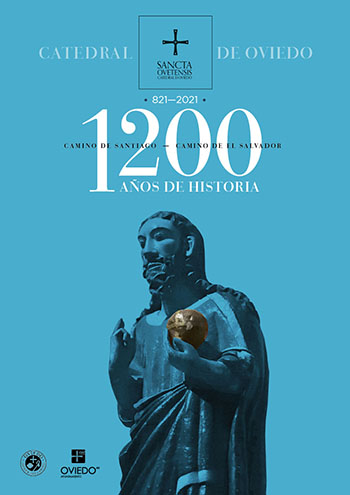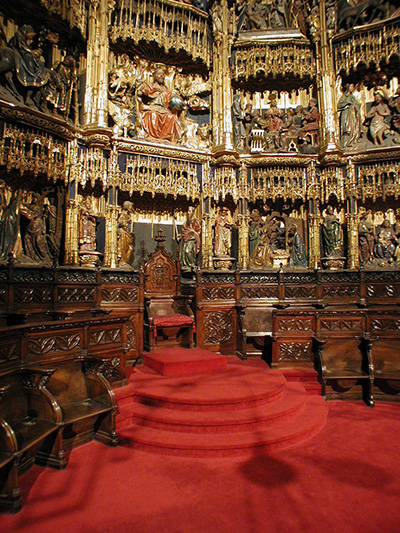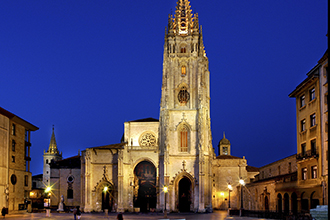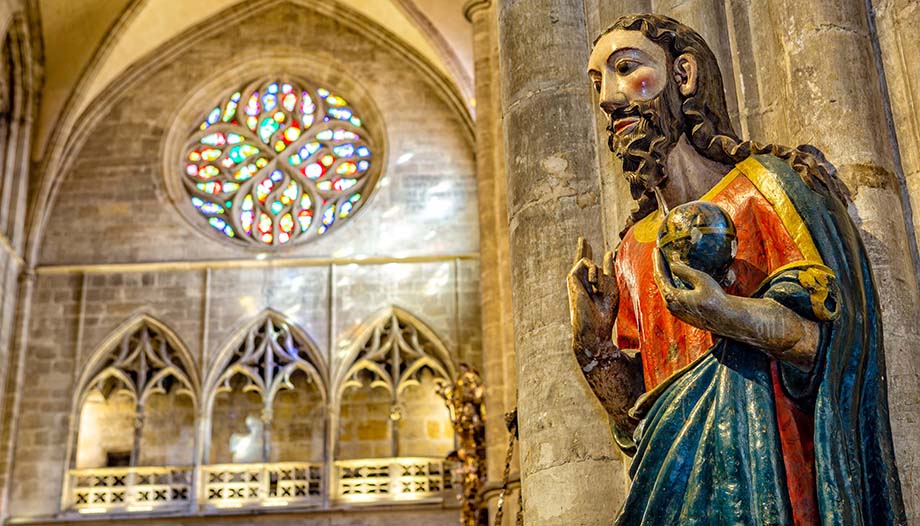"The Cathedral is the monument that transmits to the inhabitants of our world, with the plastic language of art, the faith of those who preceded us and that must continue to spread through Christian witness. The Cathedral is the "place" where the mission of the Church starts, which is always related to the creation of new Christian communities that have always a "place" where they celebrate the faith in remembrance of the Lord," he tells Omnes José Luís González Vázquez, Presbyter since 1980, Episcopal Delegate of Liturgy of the Archdiocese of Oviedo and Canon Prefect of Liturgy of the Cathedral.

The October 13 is the day that the Diocese of Oviedo celebrates the dedication of its Cathedral, whose title is the Savior and the Twelve Apostles. This was the wish of Alfonso II the Chaste, who not only made the city where he was born (Oviedo) the capital of the Kingdom of Asturias, but also established a new diocese there in the year 811, being its first bishop Adolfo, explains Don José Luis González.
The year 2021 is, therefore, a special year for the Oviedo cathedral and the archdiocese, because it will be 1200 years old of the consecration of its first altar.
"It is a moment of grace that is offered to those of us who are part of this Oviedo diocese, so that we know how to live the Cathedral as the center and manifestation of the local Church," adds the delegate of Liturgy, who is also a professor of Sacramentology and liturgy at the Seminary, and a graduate in Liturgical Theology.
So this year, after the traditional Jubilee of the Holy Cross, which takes place from September 14 to 21, there will be a celebration on October 13, the highlight of which will be the celebration of the Mass in the Hispanic rite. We talked about all this with José Luis González, virtually, as you can imagine.
What exactly is being celebrated and what is its significance? Can you comment on the historical context?
-Every year, on October 13, the Diocese of Oviedo celebrates the dedication of its Cathedral, whose title is the Savior and the Twelve Apostles. This was the wish of Alfonso II the Chaste, who not only made the city where he was born - Oviedo - the capital of the Kingdom of Asturias, but also established a new diocese there in 811, its first bishop being Adolfo.
This year of 2021 marks the 1200th anniversary of the consecration of its first altar. It is a moment of grace that is offered to those of us who are part of this Diocese of Oviedo, so that we may know how to live the Cathedral as the center and manifestation of the local Church.
The Cathedral is not a place of assembly, as might be the case with a performance hall. As the place of the proclamation of the Word of God and the celebration of the sacraments, in particular the sacraments of Christian Initiation on Easter night, it is a sign of a quasi-sacramental character.
On the other hand, it is the eloquent symbol of the uniqueness of the Diocese to which it belongs; of the bonds of communion with the other dioceses that make up the Catholic Church and, a very important and sometimes forgotten aspect, a sign of the apostolicity of our Diocesan Community.

The name comes from the fact that it is the episcopal chair. The one who sits on it is the proper Bishop who is the guarantor of the faith of the Church over which he presides, since the apostolic succession is much more than a transmission of power: it is an insertion in the apostolicity of the Church, in the symphony of communion with other Christian Communities. Therefore, the cathedra is the symbol that identifies the place where the Bishop presides over the Diocese, preaches the Gospel, testifies to the truthfulness of the sacraments celebrated there. It is, therefore, a place unique in its kind since, through the cathedra, it makes visible not only the pastoral character of the episcopal ministry, which involves teaching and governance, but also the unity in faith of those whom the Bishop gathers together in the name of Christ, Shepherd par excellence.
Because of the grandeur of its construction, the Cathedral always refers to the spiritual temple that shines with the greatness of divine grace, but, at the same time, it is also a visible figure of the Church of Christ, which, here below, raises to God its supplication, its praise and its adoration. This reality motivates the pilgrimage to the Cathedral, as a source of faith for the whole Diocese.
What events are planned by the Archbishopric of Oviedo and the entire Diocesan Community to celebrate this anniversary?
-The Cathedral Chapter, in charge of taking care of it and serving it, is organizing a series of events that cover three aspects: a) Exhibitions. b) Musical concerts. c) Cultural conferences. The culminating moment will be the celebration of the Mass in the Hispanic rite on October 13th.
In the Cathedral's agenda, it occupies a very prominent place. the "Jubilee of the Holy Cross". which is celebrated annually. It begins on September 14 and ends on the 21st of the same month. These days of rejoicing are related to the "Cross of the AngelsThe church is a beautiful jewel given to our diocesan Church by King Alfonso II in the year 808.
Since ancient times, our first temple has been called by the name of "Sancta Ovetensis" for the relics kept in it. The most important is the "Holy Shroud"Precious linen that, as the Gospel narrates, covered the face of the Lord when they took him down from the cross and found him in the empty tomb of Christ. "rolled up in a separate place" (cf. Jn 20:7).
From Jerusalem, together with many other relics that were kept in a "Holy Ark"Due to the invasion of the Persians in 614, this ark was moved from Palestine to Cartagena. Later it went to Seville and, later, to Toledo. With the Muslim invasion of the Iberian Peninsula, it found refuge in the "Monsacro".The first of these was a small mountain near the city of Oviedo. "Holy Chamber" The statue has been in the Cathedral of Oviedo, at the request of King Alfonso II the Chaste, and has remained there ever since.
Holy Shroud and Holy Cross Jubilee
-Traditionally, the relic of the "Holy Shroud" -The most famous one is displayed on September 14 and 21 at the end of the Eucharistic celebration, as well as on Good Friday. This year, the "Jubilee of the Holy Cross". will be presided over each day by a bishop. It will be opened by the Nuncio and closed by the Archbishop. The rest of the days we will be accompanied by those who are part of the ecclesiastical province of Oviedo, the natives of our land along with the Cardinal President of the Spanish Episcopal Conference.

The fact that through time, in our Cathedral, so many relics related to the person of Jesus, the Lord, have been kept, has made it a place of pilgrimage. There are several paths that lead to the "Sancta Ovetensis". Their names are: "Camino de San Salvador". and, also, "Relic Road".. In the Cathedral of Oviedo we find the origin of the "Camino de Santiago". Its first pilgrim was the Asturian King Alfonso II. It is also a pilgrimage destination.
Will Asturian civil society be involved in any way?
-The City Council of Oviedo, in the person of its mayor, expressed its desire to collaborate in these events and is doing so.; some social media have also offered their generous disposition.
At a time when it seems that more temples are being "closed" than are being opened, the dedication of the "heart of the diocese" is being commemorated. What meaning does it have for the diocese, for its faithful?
- The cathedral building, which is sacred because it is destined to contain the "Body of Christ" which is its Church, has a strong evocative capacity. It is the monument that transmits to the inhabitants of our world, with the plastic language of art, the faith of those who preceded us and that must continue to spread through Christian witness. The Cathedral is the "place" where the mission of the Church starts, which is always related to the creation of new Christian communities that have always a "place" where they celebrate the faith by remembering the Lord. Celebrate the dedication of our "Mother Church", is to renew the commitment to make it grow through a more committed living of the Gospel.
Will there be any reference to the Virgin of Covadonga, the Santina, the object of so much popular devotion?
-The Cathedral of Oviedo today encompasses three churches that were originally separate, but in the beginning were "grow up" the cathedral factory was encompassing them in its interior. They are: the chapel of Santa María del Rey Casto, pantheon of the Kings of Asturias; the temple of San Salvador and the Twelve Apostles, and the Holy Chamber, where the various relics that came to this See through time are kept.
In the chapel of Santa María del Rey Casto, in its central altarpiece, presiding over it, is the image called the image of "Santa María de las Batallas".. The image of "Our Lady of Covadonga" -popularly called "La Santina"- also goes by the name, although it is less well known, of "Santa María de las Batallas". and, possibly, accompanied the Asturian kings in their desire to recover for Christ the Iberian peninsula conquered by the Arabs after the battle of Guadalete.








